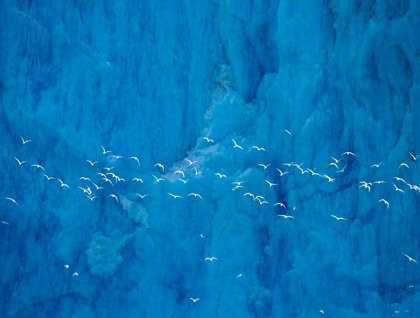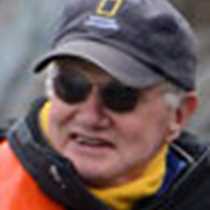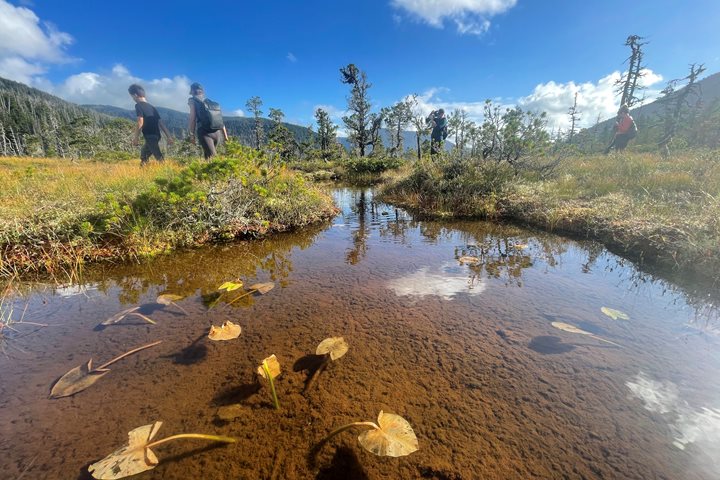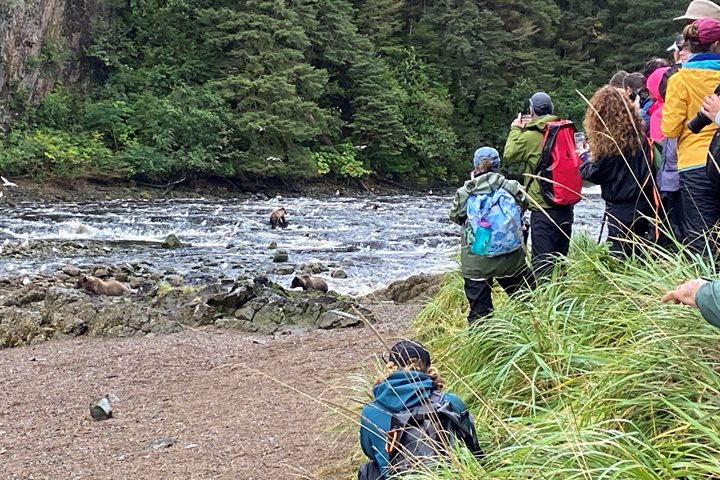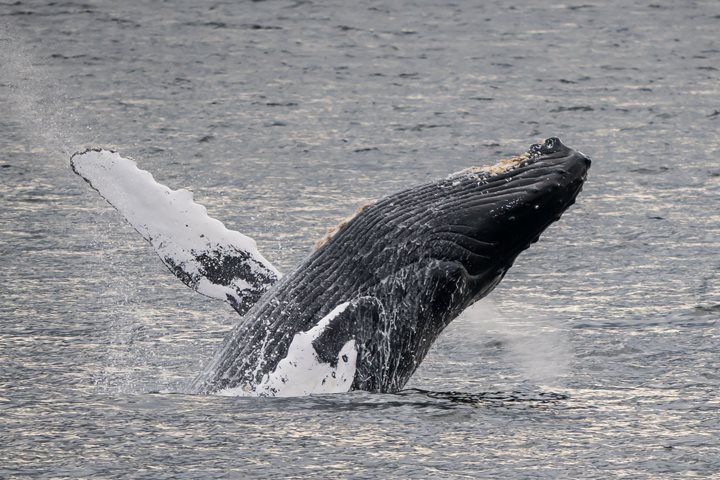We awoke under sunny skies in Endicott Arm. While all salty waterways in Southeast Alaska are fjords, this one is particularly intense because of the rock from which it is carved. In most parts of Southeast, subduction has plastered layer upon layer of oceanic rock to the edge of North America, breaking them up in the process. But here, deep into the Coast Range, the rock is granite, hard, and relatively unfractured. Thus, glaciers carve deep and spectacular fjords. Steep walls soared all around, culminating in rounded peaks thousands of feet above us. Deep striations marked the bedrock, showing the erosive power of the glacier’s stony belly. Forests of spruce clung improbably to vertiginous cliffs.
It became increasingly clear that glaciers were near. We saw the color of the water turn to a milky jade because of fine rock powder ground out by glaciers. Icebergs appeared. Some were small, but some were mighty, like islands of cotton or sapphire. And at last we saw the glacier.
Dawes Glacier flows from the Stikine Icefield along the Canadian border down to the sea. As a tidewater glacier, it regularly calves ice, as tons tumble into the sea with fountains like fireworks, a thunderous roar, and impressive waves.
We hopped into our expedition landing craft for an intimate look at the glacier. This is the best way to grasp the immensity of the scale of this landscape. We neared huge waterfalls with spray glowing in the bright sun. We passed by the grey chaos left in the wake of retreating ice. And then we approached the glacier. Dawes is a blue-and-white wall three-quarters of a mile wide and as high as a 20-story building! Jagged pinnacles towered in massive fragments. We sat amid the bergs and admired the scene, and all were rewarded with some impressive calvings.
Forbidding though this chilly place might seem to us, it is comfy to many a creature. Harbor seals come here to give birth to their pups, and arctic terns cut short their legendary migration by finding “arctic” conditions in an otherwise temperate area. Gulls find icebergs a fine resting place, and mountain goats are at home on steep periglacial slopes.
In the afternoon we motored back down Endicott Arm in bright sunshine. By late afternoon we entered the wider Stephens Passage. We hoped to find whales and so we did. A good sized group of whales were feeding, perhaps on krill that abound in this area. The whales were generally in no-nonsense feeding mode, but this afforded us many fine views of lifted flukes. Whales regularly swam close enough to the ship that we could hear their powerful breaths and sense the grace and inexorability of their movement. We stayed with the whales through dinner and afterward adjourned to the bow for a long sunset in the company of these mighty creatures.

